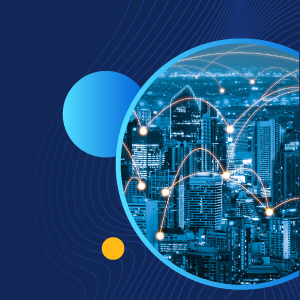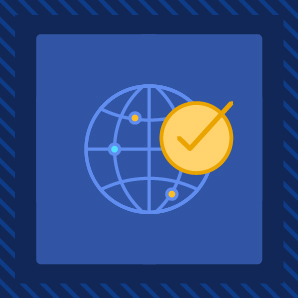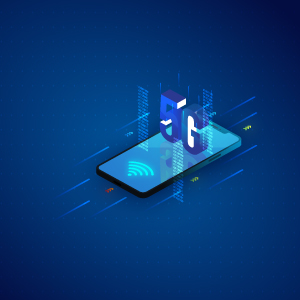Secure Public Sector networks with 5G wireless technology delivers high-speed wireless connectivity, faster data rates and lower latency for systems and communities across the nation. This next-generation mobile network enables the expansion of virtual reality (VR) and the Internet of Things (IoT) solutions. While many successful use cases have recently emerged showcasing the power of 5G in Government, Carahsoft partners are supporting agencies by providing powerful cellular networks and maintaining reliable mobile connections to achieve mission success without compromising security within workflows.
Explore more ways to leverage Carahsoft and our partners through our various upcoming Government events. Learn about acceleration of real-time delivery from devices, increased adoption of AI and multiaccess edge computing technologies (MEC) and other innovations from leading 5G technology service providers.
5G Summit
August 22 | Reston, VA
5G networks have become more common over the past few years. One study found that 5G’s worldwide share of mobile data traffic in 2021 was about 10% – but expected to grow to 60% by 2027. Government agencies are more selective when it comes to adopting 5G for their networks, partially due to higher costs associated with deploying such networks as well as unique requirements very large organizations such as the Department of Defense pose. Join thought leaders from Government and industry as they outline developments in 5G network rollouts at agencies and the ways 5G can be harnessed to open new opportunities to meet agencies’ various missions.
Sessions to look out for:
- 5G is at the Heart of CJADC2
- 5G’s Role in Modernization
- The Future of 5G Technology in Government
Carahsoft is hosting this year’s 5G Summit alongside FedInsider, Cradlepoint, Nokia, Intel, T-Mobile, and Dell Technologies providing the latest management news from inside the Government.
T-Mobile Tech Experience: 5G Hub
August 27 | Bellevue, WA

Inaugurated in 2016, the Tech Experience has set out to create innovative and engaging experiences to inspire the industry to turn concepts into tangible, transformative solutions. The T-Mobile 5G Hub offers opportunities to meet with engineers, immerse in technology demonstrations and gain other valuable resources. At the event, hear directly from project partners about the successful projects crafted within the 5G Hub, explore video testimonials showcasing T-Mobile’s facilities, technology, expertise and partnerships, and get ready to participate in ample networking sessions.
Carahsoft partners AWS, Dell Technologies, Nokia, Ericsson, Microsoft, Google Cloud and Qualcomm will be featured at the 2024 T-Mobile Tech Experience.
ATARC Federal Mobility Summit
September 19 | Reston, VA
ATARC, the Advanced Technology Academic Research Center, and Carahsoft invite attendees to a day full of networking, innovation and collaboration within the world of federal mobility. At the Federal Mobility Summit, industry experts and leaders in Government will explore the latest trends and updates in mobile technology such as security, Zero Trust, acquisition, best practices and emerging solutions. Connect with peers and gain valuable insights into the future of mobility in the federal sector.
Sessions to look out for:
- Securing Mobile Technologies: Identity, Zero Trust, and Threats
- Navigating Mobile Acquisitions: Strategies and Best Practices
- Next-Generation Networks: 5G, 6G, and Their Impact
- Mission Enablement: Tools and Technologies for Success
Carahsoft is proud to host the Federal Mobility Summit at our office in Reston, Virginia and holds an ATARC membership, immersing further into the Federal IT community.
Open RAN GLOBAL FORUM
September 24 | Virtual
Open RAN, or Open Radio Access Network, is an evolving shift of industry standards and mobile architecture so that service providers can use equipment from multiple vendors while ensuring interoperability. The Open RAN Global Forum brings industry experts and Government together to delve into the latest updates for Open RAN including the role Open RAN will play in 6G, focusing on energy-efficient, AI-driven and customizable technology. Featuring interviews, live discussions and demos, attendees will learn more about adoption challenges and progress surrounding tier-one telecom operators’ roadmaps. Other key themes featured at this year’s event include examining the growth of AI and automation in RIC, exploring Open RAN economics and capitalization opportunities, testing and reducing energy consumption and more.
Carahsoft partners and mobile carries Verizon and T-Mobile will be featured at Open RAN GLOBAL FORUM.
Mobile World Congress
October 8-10 | Las Vegas, Nevada
Prepare for the new era of hyperconnected business and smart cities or procure technology that can be deployed right now to make legacy systems and existing processes faster, easier and more resilient with industrial-grade 5G. At Mobile World Congress, explore technology themes like enterprise transformation, AI networks and 5G EdgeCloud with 5G leaders, architects and systems integrators, as well as CIOs from successful 5G enterprises, and discover how this technology can solve today’s biggest industry challenges.
Carahsoft partners Verizon, Qualcomm and Microsoft will be featured at this year’s MWC.
5G Round Table Webinar Series
October 3 & November 14 | Virtual
This fall, join us for two 5G Round Table sessions featuring real-world insights from Intel and T-Mobile. Hear from thought leaders from Government and industry outlining developments in 5G network rollouts at agencies and the ways 5G can be harnessed to open new opportunities to meet agencies’ unique missions.
Carahsoft will be hosting this event alongside FedInsider. CPE credits will be provided for qualified participants.
AutoCon 2
November 18-22 | Denver, CO
Full adoption of network automation is a continuous challenge for the mobility community that innovators at AUTOCON 2 hope to discover a solution for. The first, single, in-person event was a foundational moment for collaborators to advance the state of automated network operations. Now, the founders of the event are working to grow AutoCon into a recurring series of practitioner-focused events. This fall’s event will feature informational conference sessions, workshops and networking opportunities.
Carahsoft partners Nokia and Arista will be featured at AUTOCON 2.
Carahsoft’s 5G Podcast Series
Multiple Events | Virtual
Carahsoft’s podcast series dives into the world of 5G technology solutions, featuring expert insights from industry leaders. Explore sessions on the strategic advantages and key technologies for 5G, relevant applications of 5G for Federal, State and Local Governments and specific agency use cases such as the transformative success stories, learning curves and future objectives of 5G for the Department of Defense. Don’t miss out on this opportunity to impact the power and possibilities of 5G technology.
To learn more or get involved in any of the above events please contact us at 5G@carahsoft.com. For more information on Carahsoft and our industry leading Cybersecurity technology partners’ events, visit our 5G Solutions Portfolio and 5G Events page.

 Realities of Critical Infrastructure Environments
Realities of Critical Infrastructure Environments Expanding the sphere of influence
Expanding the sphere of influence How to Unleash the Power of Edge Computing
How to Unleash the Power of Edge Computing